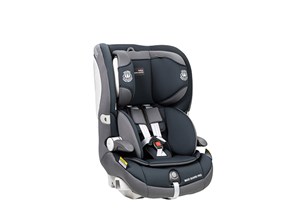Common Mistakes to Avoid When Fitting a Child Car Seat/Child Safety Restraint

One of the most important safety decisions you will make for your child is choosing a suitable car seat (Child Safety Restraint). This handy guide provides practical information to help you select the best car seat for your needs. While the following information provides some tips on how to install a car seat, every car seat is different, and you must follow the manufacturer instructions for your particular model of car seat.
TIP 1: Choosing The Appropriate Seat For Your Child's Needs
The first step to ensuring a properly fitted car seat is choosing the right size for your child. This means selecting a car seat that is appropriate for your child’s age and height and that conforms to Australian, USA with NZ standards S-mark, or European safety standards.
You should follow the national safety road laws and manufacturer’s instructions on which car seat to use and keep using the car seat for as long as possible as the safest transport option.
A common mistake parents make is progressing to the next type of car seat based on age rather than height. Size of a child can vary and not all 4 years olds are the same size. Children should fit within between the minimum and maximum height and weight limits (or in the case of AS/NZS restraints, within the shoulder height marker advice), for the specific model of car seat they are using.
Children require different types of car seats as they grow and each state in Australia New Zealand law requires children up to 7 years to be restrained in an appropriate restraint. Furthermore, if an appropriate restraint is available in the vehicle then a child must use it up until their 8th birthday.
Age should be used as a guide only:
Children don’t outgrow a car seat by age, but by height and/or weight.
It is recommended by The American Academy of Pediatrics (AAP) and Plunket NZ that children ride in a rear-facing car seat until they are 2 years of age or until they reach the highest weight or height allowed by the car seat’s manufacturer.
TIP 2: Consider The Height Of The Child
Current Australian car seats feature a shoulder height marker which dictates use.
* Your child should remain in a rear-facing seat or position until their shoulder is in-line or above the forward facing height marker.
* Your child should remain in a forward facing seat until their shoulder height is above the upper shoulder height marker.
For USA with NZ standards S-mark, or European safety standards refer to your instruction manual for minimum and maximum heights and weights.
Choose The Safest Position For The Car Seat
The safest placement of a car seat is on the rear seat of your vehicle in the center position, as it protects your child in the event of a side impact collision. The rear passenger side of your vehicle is an alternative option. You should always install the car seat where there is an appropriate anchor point and according to the instructions in your vehicle’s owners’ manual. A professional fitter can also help to install your car seat in the safest position in your vehicle.
Incorrectly Installing
With so many belts and straps, ensuring correct car seat installation can be confusing. You should always follow the manufacturer’s instructions on how to fasten straps, making sure the car seat is secured tightly to your vehicle with no more than a couple of an inch (2.5 centimetres) movement from back to front or side to side. If you do not feel confident about installing the car seat yourself, you can consult a professional Child Safety Restraint fitting service.
Installing The Baby Seat At An Unsafe Angle
A properly installed infant carrier or rear-facing car seat will keep your baby's head positioned comfortably on the back of the car seat. The preferred angle of a rear-facing car seat base is 10-15°, for vehicles with a flatter car seat you can pack firmly rolled up towels on the underside of the base to achieve the desired angle. Some car seats include levelling indicator lines that allow you to gauge the correct angle.
TIP 3: Practice Using The Harness and Straps
As well as providing safe and secure support, it is important that child car seats, harnesses and straps are correctly adjusted.
You will be dealing with straps every day, so it is highly recommended to test the ease of use before you make your purchase.
Some car seats also the feature harnesses that do not require threading/unthreading thus enable automatic shoulder height repositioning. These are important features that make using a car seat easier and less stressful.
TIP 4: ALWAYS Choose A Car Seat That Has Been Safety Tested
In a collision, infants, babies and children are extremely vulnerable if they are not properly secured in a car seat.
In New Zealand it is illegal to use a car seat that does not comply with either Australian/New Zealand Standard 1754, USA FMVSS213 with NZ standards S-mark, or European safety standards(see NZTA website regarding in-built child restraints in Japanese vehicles).


